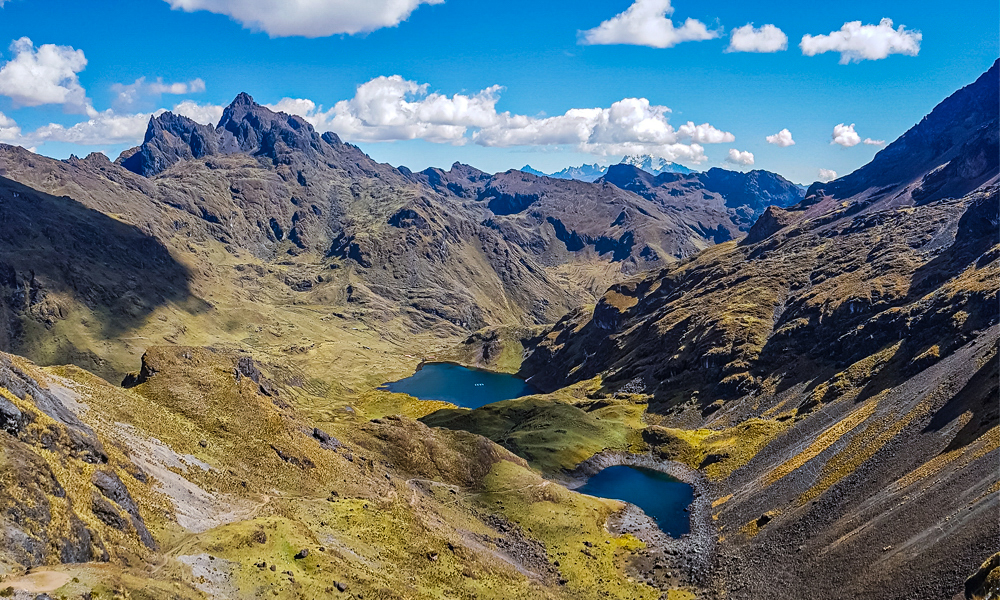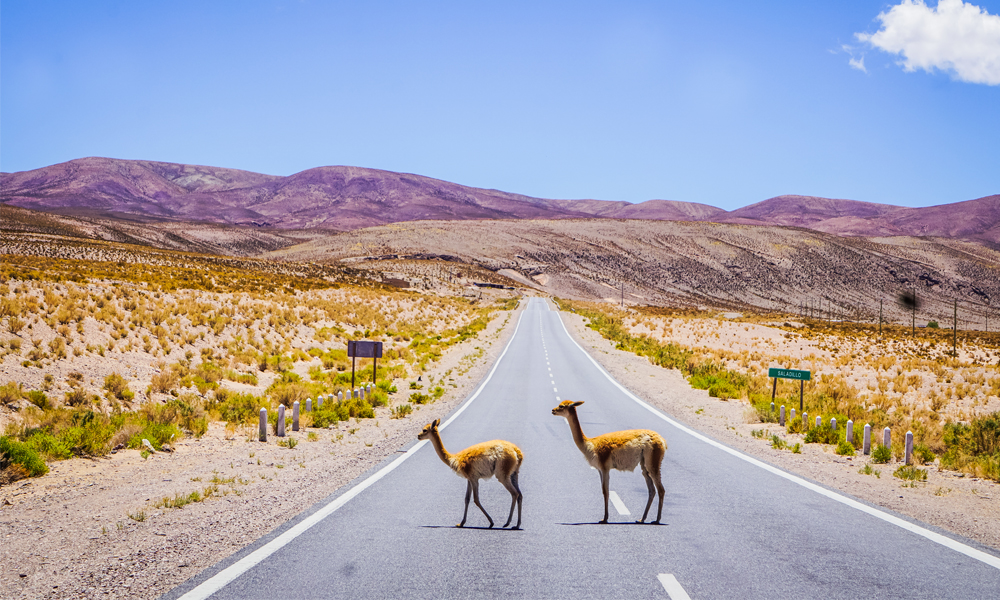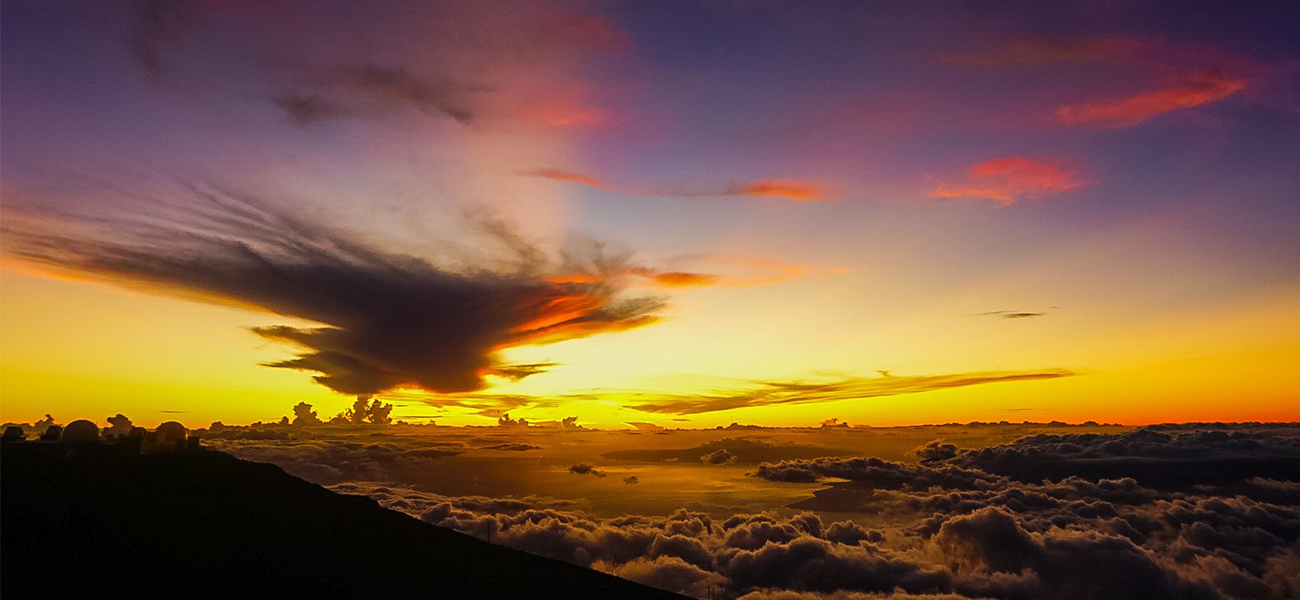
Call us sunset chasers, but we just can’t help researching the best places to see the sunset everywhere we go which has resulted in us seeing beautiful spectacles all over the world that have left us speechless.
But nothing was quite like the one we saw in Hawaii. This led us to wonder why the sunsets here seemed to be so much more vivid and impressive and we asked ourselves if any of our actions as a society could affect this.
The difference between a hawaiian sunset and others we’ve seen
We’re not saying that other sunsets aren’t good, but there was something about the light in the Hawaiian sunsets that stuck with us. It may have had to do with the altitude we were at and clear skies, but the dramatic landscape was constantly changing and the colours were getting brighter and brighter as the sun disappeared into the horizon. The colours seemed more vivid than usual and the air in the sky just looked clean. The clouds reflected the rich hues of red, orange and blue, turning them into a blush pink ball of fluff. The whole scenery looked more intense than usual, and on the other side of the mountain appeared a rainbow out of nowhere (something Hawaii also has many of). After about 15 minutes the sky started to get dark to reveal a star speckled sky.
Eco Tip 13: Carry a reusable mug with you for those desperate coffee moments! You
can find collapsible cups that can easily fit in your bag or pocket.
the scientific reason behind it
The reason why Hawaiian sunsets differ to others is because of a few various factors.
Geographic Placement - The position of the Hawaiian islands north of the Equator allows the air to become more humid. This aids scattering (the effect in which gases, dust and water vapour scatter blue and violet light) which makes the colours more intense
Uninterrupted Horizon - The sun sets over the Pacific Ocean which is essentially in the middle of a massive open space. There is no other land close by to interrupt the horizon or break the atmosphere.
The Terrain - Due to the islands being made of one or more volcanoes, the volcanic dust gets blown along from East to West which also helps with scattering. This also causes the sunsets to be more vivid in colour than the sunrise.
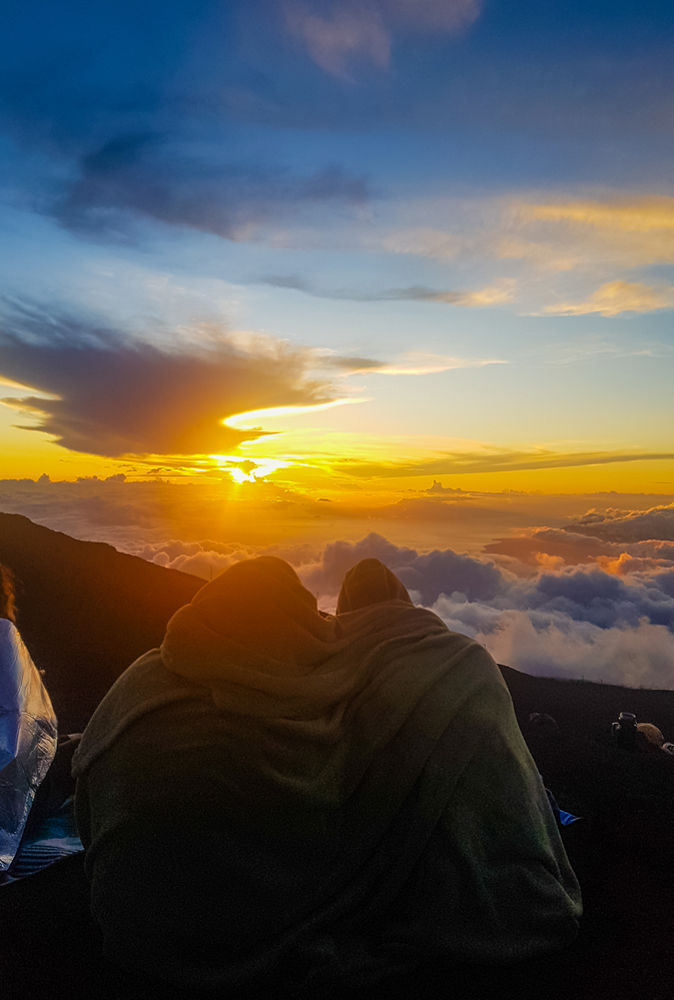
Saying 'Mahalo' For Another Great Day!
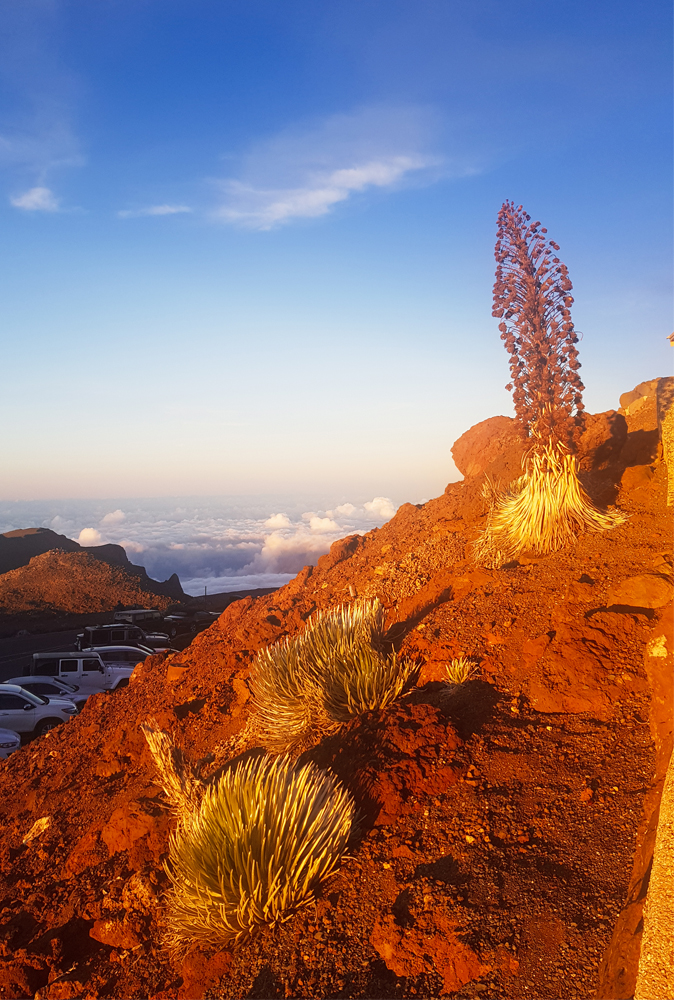
Sky High Above The Clouds
Other cool facts about Hawaiian sunsets
The angle of the sunset (the position of the sun in relation to the horizon) also plays a big part in the glowing colours. This is because the light from the sun still affects the air when it goes down, which explains why the colours of the sky start changing dramatically once the sun goes down.
The traditional Hawaiian custom is to blow the Pū (pronounced poo), the Hawaiian conch shell to say goodbye to the sunset and ‘Mahalo’ (thank you) to the end of the day. This is the last moment of the day that the Pū will ever get blown. If it gets blown after dark then it is believed to bring evil spirits.
What we can do to keep the skies glowing
You may have noticed that the sunsets appear more colourful after a clear, sunny day. This is because more vivid sunsets occur when there is less pollution in the air and we have clear skies. In order to predict a dramatic sunset we need clouds, but what makes a big difference is when the air of the sky is clean. The thicker the pollution gets, the more hazy they skies will be which will block out the wonderful colours to mark the end of the day. If we all make a conscious effort to reduce our pollution, we’ll continue getting cleaner air and in turn we’ll be rewarded with striking skies.
Where have you seen the best sunset? We’d love to know, let us know in the comments below and get other travellers involved in the community!
If you’re interested in more in depth sunset reading, we particularly found this page interesting: The Colours of Sunset and Twilight – written by Stephen F. Corfidi


